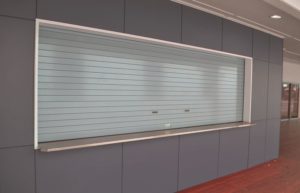The Worst Design Mistakes Made on Display Banners

Now that you’ve decided that you want a pull-up banner, how do you know what to put on it?
The great thing about a banner is that it offers space and eyeball grabbing attention, which means that whether you’re in healthcare or IT, a banner is a very versatile piece for your marketing and promotional activity.
However, there are some design elements that must be considered and respected. We pulled together the top three worst design features used today – so you don’t make the same mistakes!
Design failure: Too much copy
It’s very tempting to jam as much information, otherwise known as copy, into your banner. Many new banner owners rationalise that if they’ve invested in all that space, why not turn the banner into a portable sales pitch?
The issue with this is that it goes against the banner’s best attribute: instant captivation.
The structure of the banner works to disrupt the casual observer’s gaze, so the best banner designs use short, simple copy to ‘shout out’ to visitors what to expect.
A banner clogged up with copy is exhausting to read, hard to discern from a distance and easily ignored – which is terrible news for those who use this kind of design in a busy shopping centre or exhibition.
How to avoid this design failure: Imagine the banner as the bait on your hook to reel in your prospective customers. Emphasise the best benefit from purchasing from you: special deals, exclusive offers and even guarantees!
Design failure: Low-res images
A stunning banner design can convey a lot of messaging with one simple image; however, if you choose to make a shortcut and use a low-quality image, the only message you’ll get out for your brand and wares is that ‘near enough is good enough’.
Make sure to have high-quality versions of your logo, brand, product names and images on file before commissioning your banner – and definitely don’t take images from an internet search engine collection.
How to avoid this design failure: If you’re not sure on whether your files are appropriate for large-scale printing, just ask us a professional.
Otherwise, graphic designers have all the skills and knowledge to create or recreate your artwork in high-quality files; and signing up to an image library (like Getty) can allow you to purchase licensed images to enhance your marketing material.
Design failure: Poor mix of colours
Banners look fantastic with a flash of colour, but sometimes even the best-intended colour combination can work against the messaging. Here are some examples:
Using similarly coloured background and text: Using colours within the same family for background and text makes reading and comprehension very difficult.
Using complementary colours for background and text: Complementary colours can certainly make a visual impact, but they are almost disastrous when used for banner backgrounds and text. The stark differences between the two colours fight to overpower each other, which in turn can hurt the eyes and make reading confusing, so avoid this at all costs!
Rainbow colours: Very few designers have perfected the art of using rainbow colours; the myriad of colours and shades can make an otherwise empty banner look busy
Light colours on white background: Light coloured text and imagery can be difficult to see and understand on a white background without squinting.
How to avoid this design failure: Take a look at some existing banners next time you’re out and then enlist a designer to help pull together your design.
Read Also:
- Banner Display System – Inspiration for Your Business
- A Brief Look At Some Outdoor Events Where You May be Able to Capture Your Target Demographic
- What Items Do You Need for An Outdoor Display System?






